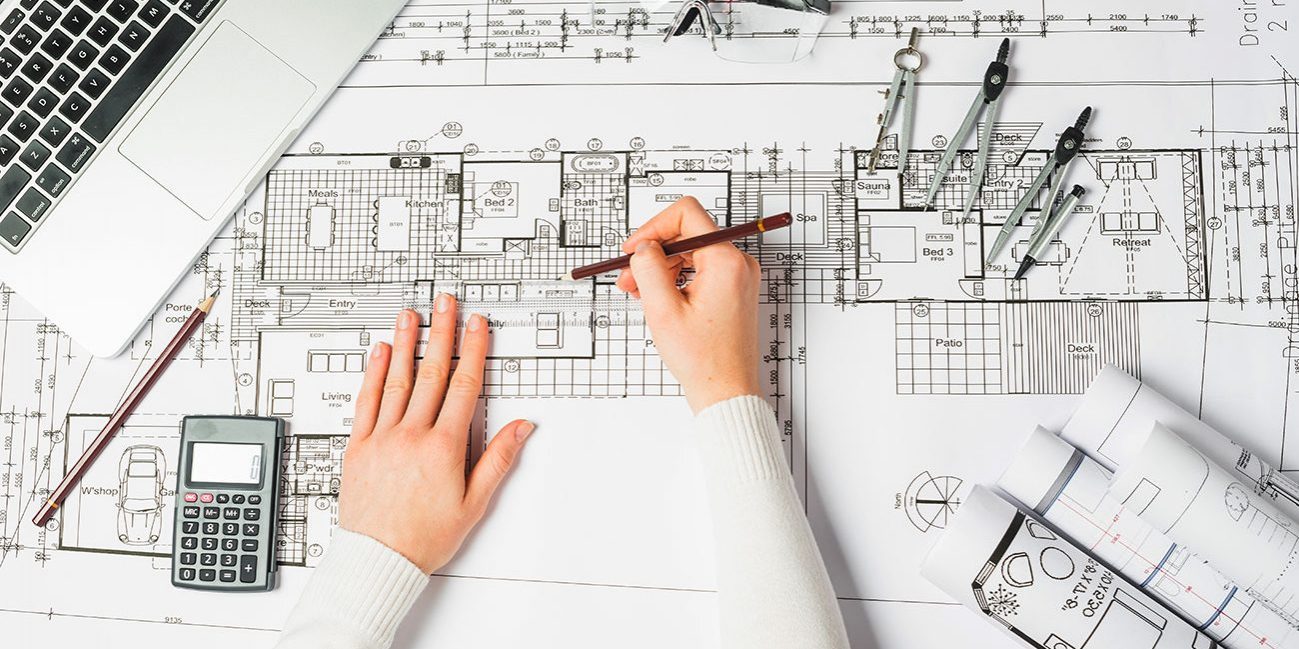Architect Guide to Green Building Materials
Architect Guide to Green Building Materials
Blog Article
Comprehending the Diverse Career Paths Available for Aspiring Architect
As an ambitious Architect, you have a world of occupation paths waiting for you. Each course provides one-of-a-kind difficulties and opportunities to use your imagination and technical knowledge. Whether you're attracted to standard design or the nuances of sustainable layout, there's a particular niche that straightens with your rate of interests. Recognizing these diverse choices can form your specialist trip, yet which direction will you select to explore first?
Standard Architecture: Designing Structures and Frameworks
Typical architecture concentrates on creating structures and frameworks that blend performance with visual charm. As you discover this area, you'll value the complex equilibrium between kind and objective. You'll find out to attract motivation from historic designs, including elements like symmetry, materials, and workmanship. Your styles can show social heritage, showcasing neighborhood practices while meeting modern needs.
You'll develop skills in drafting, model-making, and site evaluation, allowing you to picture and interact your ideas efficiently. Engaging with clients, you'll need to recognize their vision and convert it into possible styles.
Moreover, developing codes and sustainability practices are vital in your work, guaranteeing your structures are environmentally pleasant and risk-free. As you grow in your career, you'll find opportunities in domestic, business, or also remediation tasks, each offering special obstacles. Embracing traditional style paves the way for a meeting occupation that pays homage to the past while forming the future.
Urban Preparation: Shaping Areas and Public Spaces
As a hopeful Architect, you can play a vital function as a city coordinator, changing exactly how communities operate and engage. By employing neighborhood interaction approaches, you'll ensure that homeowners have a voice in shaping their setting. Plus, incorporating sustainable style concepts will certainly help produce rooms that not only satisfy today's needs but likewise shield the future.
Role of Urban Planners
While numerous may think of architects as the single dreamers behind structures, metropolitan planners play a necessary role in forming the more comprehensive landscape of areas and public areas. By working together with numerous stakeholders, you'll help create parks, transport systems, and property areas that promote social interaction and ease of access. Your competence in spatial style and area dynamics enables you to picture future growth while protecting cultural heritage.
Area Interaction Techniques
Effective area involvement techniques are vital for metropolitan planners to guarantee that the voices of citizens are heard and valued in the planning procedure. To cultivate purposeful dialogue, you need to prioritize open forums and workshops where neighborhood members can express their ideas and worries. By proactively integrating and paying attention comments, you'll produce areas that show the neighborhood's requirements, eventually leading to even more lasting and effective urban environments.
Sustainable Layout Principles
When designing urban spaces, including lasting design concepts is crucial for creating settings that prosper both ecologically and socially. Take into consideration incorporating green rooms, like gardens and parks, to boost biodiversity and enhance air high quality.
Creating with water conservation in mind is additionally crucial-- consider rainfall gardens and absorptive surfaces to handle stormwater. Including community participants during the preparation procedure guarantees that the spaces you produce fulfill their requirements and encourage social interaction. By welcoming these principles, you'll add to dynamic, sustainable city landscapes that profit every person.

Landscape Architecture: Creating Sustainable Exterior Settings
As you explore landscape design, you'll find vital design concepts that produce functional and attractive outside spaces. Lasting methods play a vital role in making sure these environments grow while decreasing environmental influence. Plus, you'll locate a range of occupation opportunities that enable you to make a real distinction in how individuals communicate with nature.
Layout Principles in Landscape
Understanding design principles in landscape design is essential for creating lasting exterior settings that harmonize with nature. You'll need to contemplate elements like balance, proportion, and range to guarantee your layouts really feel natural and inviting. Additionally, pay focus to seasonal changes, designing with products that complement the surroundings year-round.
Sustainable Practices Overview
Lasting techniques in landscape design not just concentrate on looks however likewise prioritize eco-friendly health and wellness and resource conservation. By incorporating native plants, you enhance biodiversity and reduce the demand for chemical plant foods and pesticides. Implementing effective watering systems assists conserve water and decreases overflow, shielding neighboring environments. You can develop rooms that advertise soil health, such as practicing and utilizing organic materials permaculture principles. Additionally, including green framework, like rain yards and porous sidewalks, help in stormwater administration and reduces city heat. When you develop outdoor environments with sustainability in mind, you add to a healthier earth and offer rooms that foster area connection. Inevitably, these practices ensure your layouts benefit both people and the setting for years ahead.
Career Opportunities Exploration
With a strong structure in lasting practices, landscape architecture provides a range of my response job courses that permit you to make a purposeful influence on the environment. You might function as a landscape developer, developing aesthetically pleasing and practical exterior rooms, or concentrate on eco-friendly reconstruction, helping to revive damaged environments. Urban coordinators commonly team up with landscape engineers to create eco-friendly spaces in urban setups, enhancing city livability. If you're passionate concerning education and learning, take into consideration coming to be a landscape design instructor, motivating future generations. Furthermore, you may work with nonprofits concentrated on ecological sustainability or take part in research to introduce brand-new methods. Each path not only forms gorgeous environments but additionally promotes a healthier world for future generations.
Lasting Layout: Concentrating On Eco-Friendly Practices
As you explore your job in design, welcoming eco-friendly methods can establish you apart in a competitive area. Lasting style concentrates on producing structures that reduce ecological impact while enhancing passenger well-being. By integrating eco-friendly materials, energy-efficient systems, and lasting structure strategies, you'll contribute to a greener future.
Begin by obtaining knowledge of eco-friendly accreditations like LEED or BREEAM, which can strengthen your credentials. Think about exactly how all-natural light, air flow, and thermal efficiency can optimize style. Team up with designers and environmental specialists to introduce remedies that reduce waste and save resources.
Do not neglect the value of neighborhood involvement-- engaging neighborhood stakeholders can influence styles that integrate with the setting. As customers significantly prioritize sustainability, your knowledge in green practices will certainly not just bring in jobs yet additionally fulfill your passion for responsible architecture. Accept this critical facet of the career, and see your job prosper.
Historical Preservation: Shielding and Recovering Social Heritage
While you start on your building journey, think about the vital function of historic conservation in keeping our cultural heritage. This field concentrates on the protection and repair of significant structures, websites, and frameworks that inform the tales of our past. By taking part in historical conservation, you'll assist useful source safeguard the building heritage that forms neighborhood identity.
As a historic preservation Architect, you'll assess historic importance and assess the condition of structures. You'll function closely with chroniclers and preservationists to guarantee authentic repair strategies are utilized. This profession course enables you to blend imagination with research study, enabling you to design services that respect original products and workmanship.
Your work not only adds to sustainability by recycling existing structures yet likewise fosters a feeling of pride within communities. Welcoming this path will help you come to be a guardian of background, preserving the tales and appearances that enrich our lives.
Interior Design: Enhancing Indoor Spaces
Historic preservation and indoor style both share a commitment to improving the developed setting, but they focus on different facets. While historic preservation highlights keeping a framework's historic and social worth, interior architecture nos in on enhancing interior spaces for performance and looks.
As an ambitious Architect, you'll find that interior style permits you to blend creative thinking with technological skills. You'll create rooms that not just look excellent however likewise promote convenience and effectiveness. This field includes comprehending exactly how light, color, and materials communicate within an area, influencing state of mind and usability.
You'll work with why not look here different jobs, from property homes to industrial workplaces, making sure that each environment meets the needs of its occupants. By prioritizing customer experience, you can change interiors right into functional and inspiring spaces, making a considerable influence on how people communicate with their surroundings. Embrace the possibility to boost interior environments and shape the means individuals live and function.
Industrial Design: Merging Capability With Looks
Commercial layout plays a crucial role in producing items that seamlessly mix aesthetics with functionality, guaranteeing that what you use daily is not just visually enticing however also useful. As a hopeful Architect, you could involve yourself in this field, concentrating on creating whatever from furnishings to consumer electronic devices. Your work entails recognizing user demands, materials, and making processes, allowing you to develop ingenious remedies that improve day-to-day experiences.
In commercial design, you'll typically collaborate with marketing experts, engineers, and manufacturers, ensuring that your designs are not just lovely however also feasible. This occupation course supplies a vibrant atmosphere where creativity meets functionality, making it a fulfilling selection for architects interested in shaping the products of tomorrow.
Often Asked Concerns
What Educational Certifications Do I Required to End Up Being an Engineer?
To become an architect, you'll require a specialist degree in design, typically a Bachelor's or Master's. Additionally, you'll need to complete a teaching fellowship and pass the Architect Enrollment Evaluation to practice legitimately.
Are There Accreditation Demands for Different Building Career Paths?
Yes, there're certification demands for different architectural paths. Architect. You'll need to pass tests, complete internships, and occasionally seek specialized training, depending upon your selected focus, like landscape architecture, city style, or historic conservation
What Software Application Abilities Are Crucial for Engineers Today?

Exactly How Can I Gain Practical Experience While Studying Style?
You can get useful experience by interning at architectural firms, getting involved in style competitors, volunteering for neighborhood projects, or collaborating with schoolmates on real-world assignments. These chances enhance your abilities and construct valuable links in the sector.
What Job Opportunities Exist Outside Traditional Style Firms?
You can explore different work opportunities outside traditional design companies, like metropolitan preparation, indoor design, landscape style, building monitoring, property advancement, or also roles in sustainability consulting. Each offers one-of-a-kind difficulties and incentives.
Whether you're attracted to traditional design or the subtleties of lasting layout, there's a particular niche that lines up with your passions.When making urban areas, integrating lasting design concepts is important for developing environments that thrive both environmentally and socially.As you check out landscape design, you'll uncover crucial design principles that create functional and stunning outside areas.Recognizing layout concepts in landscape style is essential for creating sustainable outdoor environments that harmonize with nature.In commercial layout, you'll frequently collaborate with manufacturers, marketers, and designers, guaranteeing that your styles are not just stunning however likewise feasible.
Report this page